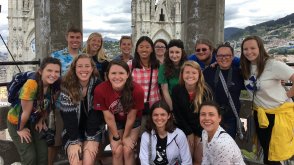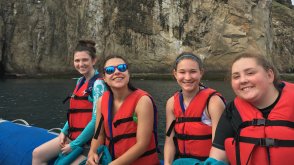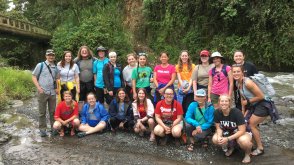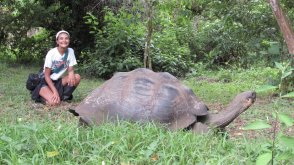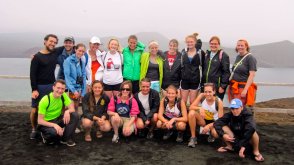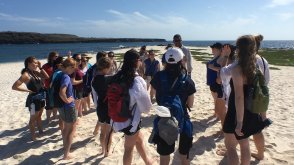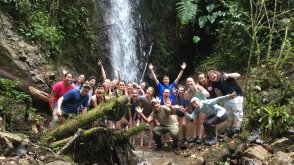Course Contact Info
Location
Associate Professor of Zoology
Schimmel/Conrades Science Center #335
E sjhankis@owu.edu

Since 1974, OWU Zoology students and faculty have traveled to the famed Galapagos Islands off the coast of Ecuador to walk in Charles Darwin's footsteps and study the theory and ecological processes that shape the flora and fauna of islands (biogeography). The course is usually offered every other spring semester.
As part of the inspiration for Charles Darwin’s theory of natural selection, the Galapagos Islands hold a unique place in the history of biology.
Still today, biological research conducted on the islands continues to shed insight into biological processes, especially as related to evolution, conservation, ecology, and behavior. And at OWU and universities around the world, zoology courses refer to organisms found only on the islands.
Island Biology is an upper-level zoology course that uses the Galapagos Islands in Ecuador as a backdrop from which to study the theory of evolution.
The class concludes with a 14-day trip to visit several islands in the Galapagos to discover firsthand the biodiversity, volcanic terrain, and geological history that make the island so compelling. Students explore the mainland and visit one of the most biodiverse spots on the planet, the cloud forests of Ecuador.
The course will cover island formation, biogeographical theory, and specific taxa endemic to the Galapagos Islands. Students will :
At the end of the semester, the class will travel to Ecuador and the Galapagos Islands for about two weeks, connecting the theory they've learned in the classroom with direct observation in the field. They will observe organisms on the Ecuador mainland and the islands to determine how they demonstrate the principles of island biogeography. They also will engage with trip guides and be introduced to the peoples and cultures of Ecuador.
Previous classes have hiked in Ecuador's Cloud Forest and have hiked, toured, and snorkeled on several islands, including San Cristobal, Espanola, Floreana, Bartolome, South Plaza, and Santa Cruz Island, home of the Charles Darwin Research Station.
Students submit research proposals during the lecture portion of the course. They complete these group-based research projects during their time in the islands and present them to their classmates during the evenings on the boat. Previous projects have included studies on crab density and group dynamics, operational sex ratio in frigate birds, interactions of Galapagos mockingbirds with humans, distribution of lava cactus relative to lava substrate, and damselfish territoriality across island locations.
Participants should be in good health and capable of walking over rocky, uneven, and potentially slippery terrain. Some hikes may be long and/or hot.
We will live on a boat during our time in the islands, so those prone to seasickness should bring medication or consider another trip.
Participants should be comfortable spending a lot of time snorkeling and in the water. We are on the equator, so the sun is intense and participants should pack accordingly. Finally, some portions of the trip are at high altitude.
